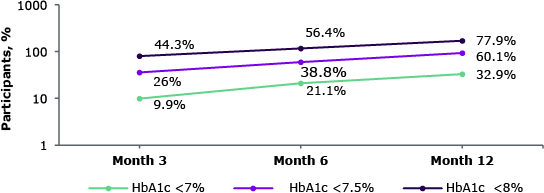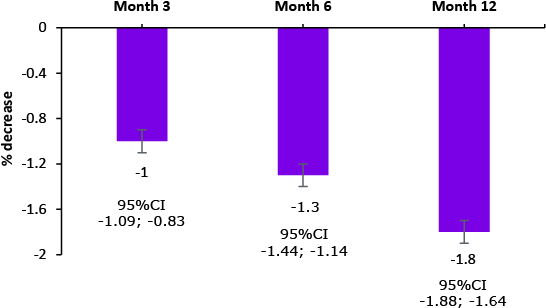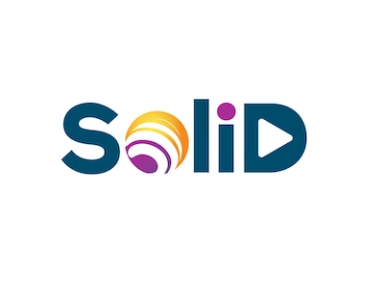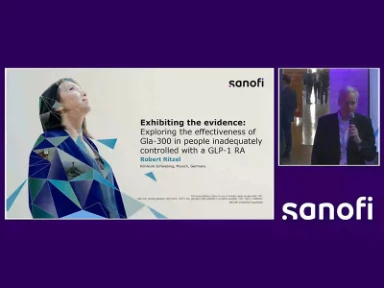The ATOS Study: Real-World Study on Effectiveness of Insulin Glargine U300 in the Gulf Region.
Real-World Study on Effectiveness of InsulinGlargine U300 After Oral Antidiabetic Drug Failure in Patients with Type 2 Diabetes in the Gulf Region
Introduction
Recent updates from the American Diabetes Association (ADA 2022) guidelines recommend basal insulin with OAD treatment for individuals with T2D post-oral therapy failure
The ATOS study, a global observational, real-world study, aimed to evaluate the effectiveness and safety of Gla-300 in Asia, the Middle East, North Africa, Latin America, and Eastern Europe
This chapter presents data from Gulf countries - Kuwait, Saudi Arabia, and the UAE - aiming to analyze regional variations in diabetes management. The focus on the Gulf region enhances the significance of the findings, considering differences in healthcare systems and patient support resources
Objective
To evaluate the real-world effectiveness and safety of Gla-300 in participants with T2D after OAD drug failure in people with T2D in the gulf region
Study Design
412 individuals with T2D from 3 countries
Insulin-naïve ≥18 years old participants included were:
Having uncontrolled HbA1c
- HbA1c >7% and ≤11% on ≥1 OAD
- in whom the treating physicians had decided, in accordance with the local guidelines, to add Gla-300 to the treatment
Gla-300 once daily (N = 412)
- The Mean ± SD at baseline for age was 52.2 ± 11.1, for duration of T2DM was 10.7 ± 6.8 years, and for HbA1c % it was 9.2 ± 1.1
- Around 50% of participants were on a non-T2D medication (n=208); ([CV conditions (n=197) and blood-related conditions (n=51)])
Study Endpoints
Primary Endpoint
 |
Percentage of participants achieving predefined individualized HbA1c goal at Month 6 |
Secondary Endpoints
 |
Change from baseline in HbA1c, FPG, SMPG, and body weight at Month 6 and 12 |
 |
Percentage of participants achieving their pre-defined individualized HbA1c target at Month 3 and 12 |
 |
Hypoglycemic events reported during the study |
 |
DTSQs Score, EQ-5D VAS score, EQ-5D TTO score, and perceived frequency of hypo and hyperglycemia |
Efficacy Outcomes
- The proportion of participants achieving HbA1c target increased over the study duration, with over 75% of participants reaching HbA1c <8% at the end of the study
- The drop HbA1c from baseline to each of the data points (month 3, 6 and 12) was consistent and significant with tight 95% CI
Proportion of participants achieving HbA1c target achievement
Levels of HbA1c in participants from Month 3 to 12
The primary endpoint of achieving individually set HbA1c target (average of 6.9% ± 0.4%) by Month 6 of treatment with Gla-300 was achieved in 57 participants [13.8% with 95% CI (10.6; 17.6)]
At month 6, the individualized HbA1c targets showed correlation with geographical location of participants i.e., participants from rural area had lower odds of meeting the target compared to urban dwellers (suburban: OR = 0.492; 95% CI [0.063; 3.864] Vs rural areas: OR = 0.656; 95% CI [0.192; 2.240])
In comparison to baseline HbA1c of 7–8% the baseline HbA1c ≥10% was associated with a lower likelihood of achieving HbA1c target at Month 6. i.e., baseline HbA1c 8–9%: [OR = 0.839; 95% CI (0.352; 1.995)], baseline HbA1c 9–10%: [OR = 0.665; 95% CI (0.272; 1.625)], baseline HbA1c ≥10%: [OR = 0.523; 95% CI (0.205; 1.336)]
A greater number of co-morbid conditions reduced the likelihood of achieving the HbA1c target by half [OR = 0.508; 95% CI 0.111; 2.332)]. Moreover, age beyond 75 years was associated with approximately 49% lower likelihood of achieving the primary endpoint (P = 0.138) (may be due to the small group size).
Other parameters analysed, including BMI, comorbidities, prior OAD use, and health insurance status, showed trends in impacting HbA1c target achievement, however these trends were not statistically significant
Other parameters analyzed
- Employment status of individuals significantly modified likelihood of HbA1c target achievement at Month 6 (P = 0.021)
- Compared to full-time employees or students, retired individuals (n = 35) were 2.893 times more likely to achieve HbA1c target(P = 0.016)
- Individuals with unknown occupation status (n = 21) had 3.857-fold higher odds of achieving the primary endpoint of the study (P = 0.007)
Safety Outcomes
| Adverse Events |
GLA 300 |
| Any AE over 6 months | 4 (1%) |
| Any AE over 12 months | 4 (1%) |
| Any SAE | (0.2%) |
| Any TEAE | (1.0%) |
| Any hypoglycemia, without instances of severe hypoglycemia | 3 (0.7) |
| Any TEAE leading to treatment discontinuation | (0.5%) |
| Any TEAE leading to death | 0 |
Conclusion
In real-life setting in Gulf region, initiation of Gla-300 in insulin-naïve people with T2D uncontrolled on OADs resulted in improved glycaemic control with low rates of reported and perceived hypoglycemia and increasingly improved PROs throughout the study duration; reflecting treatment satisfaction and better health status
Abbreviations
AE, adverse event;BMI, body mass index; CI, confidence interval; CV, cardiovascular; DTSQ, diabetes treatment satisfaction questionnaire; EQ-5D VAS, EuroQol 5-dimension scale visual analogue scale; EQ-5D TTO, EuroQol 5-dimension scale time trade-off; FPG, fasting plasma glucose; GI, gastrointestinal; Gla-300, insulin glargine 300 U/mL; HbA1c, glycated haemoglobin; OAD, oral antidiabetic drug; OR, odds ratio; PROs, patients reported outcomes; SD, standard deviation; SMBG, self-monitored blood glucose; SAE, serious adverse events; T2D, type 2 diabetes TEAEs, treatment-emergent AEs.
Khan NE et al. DiabetesTher. 2024 Mar;15(3):691-704. doi:10.1007/s13300-024-01537-2







